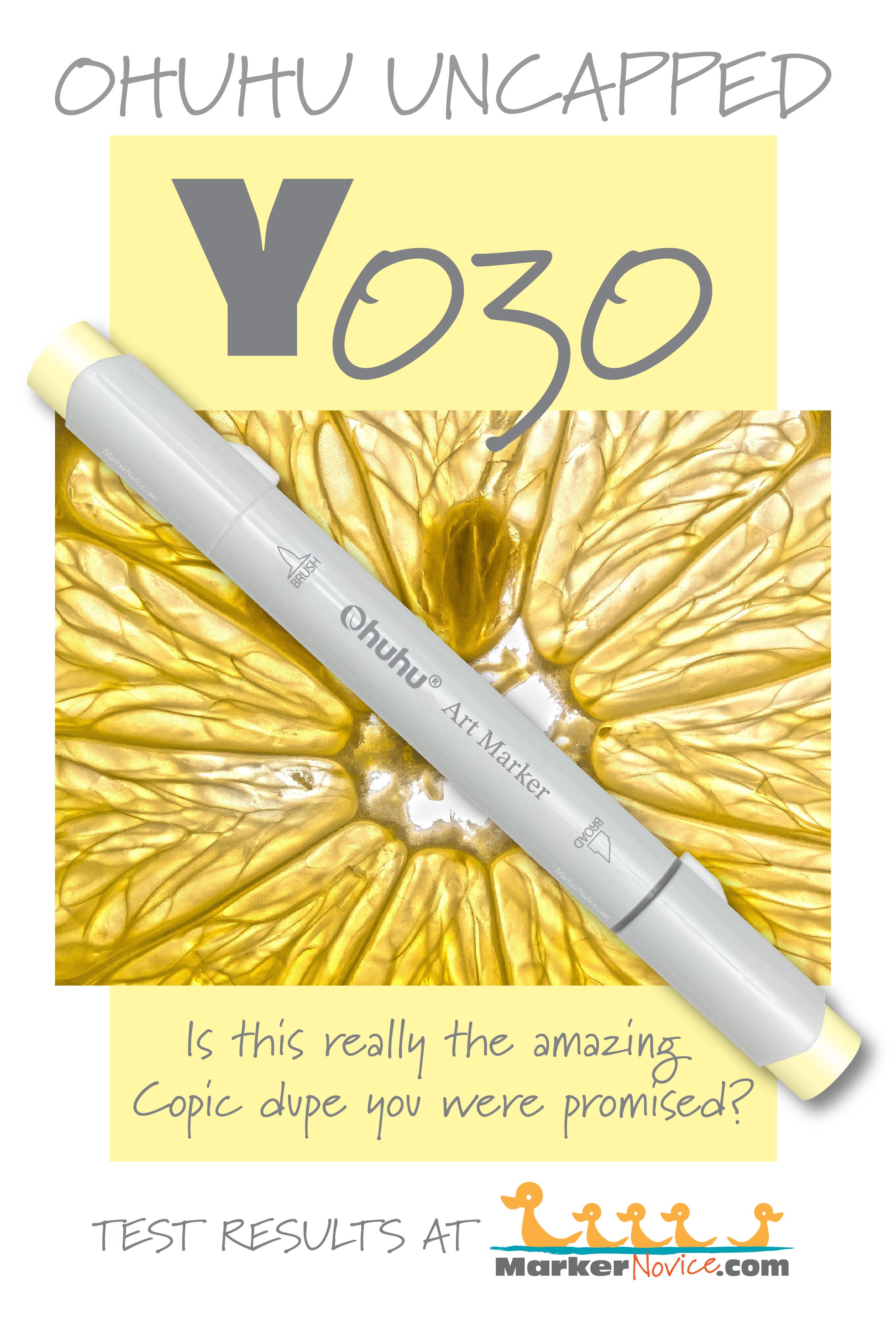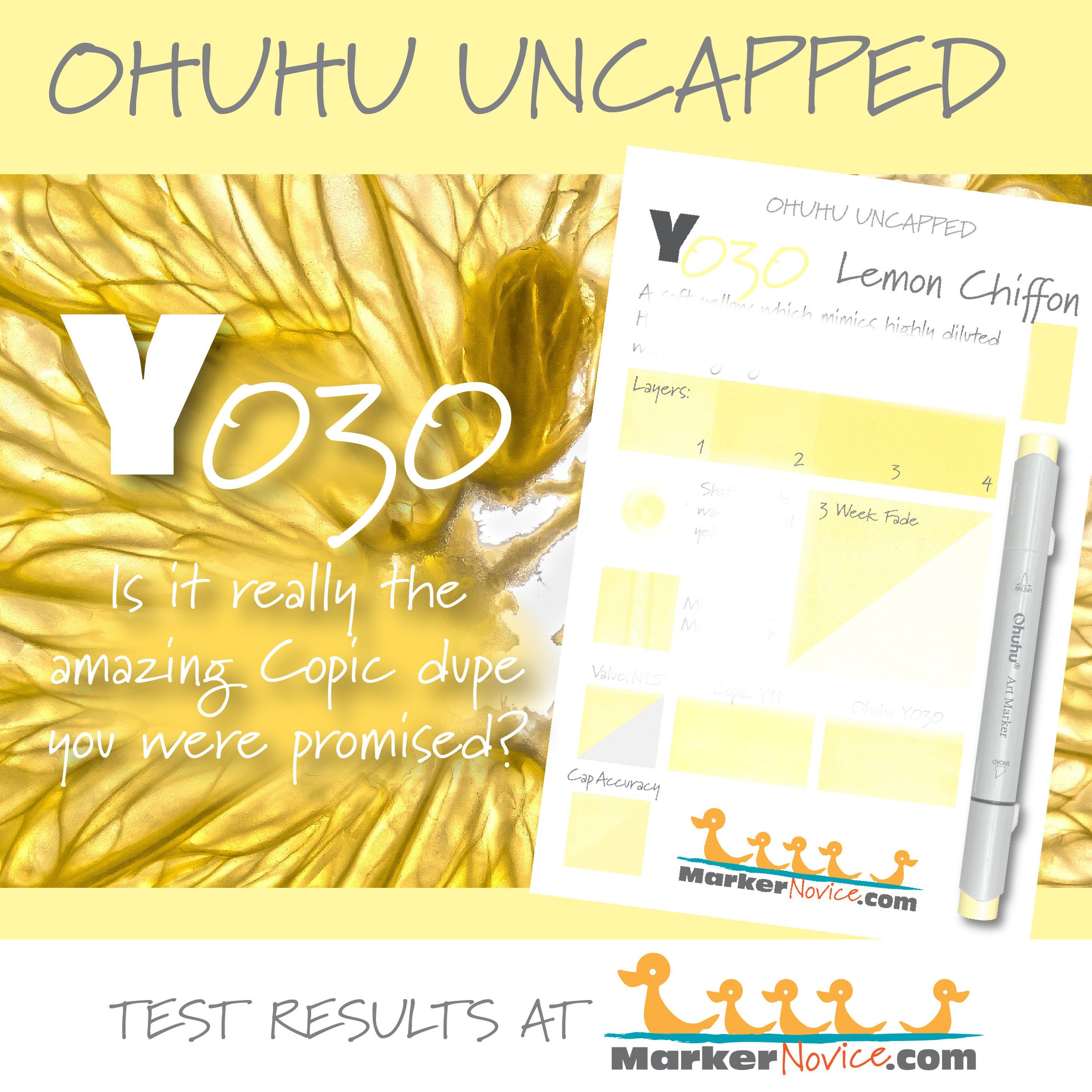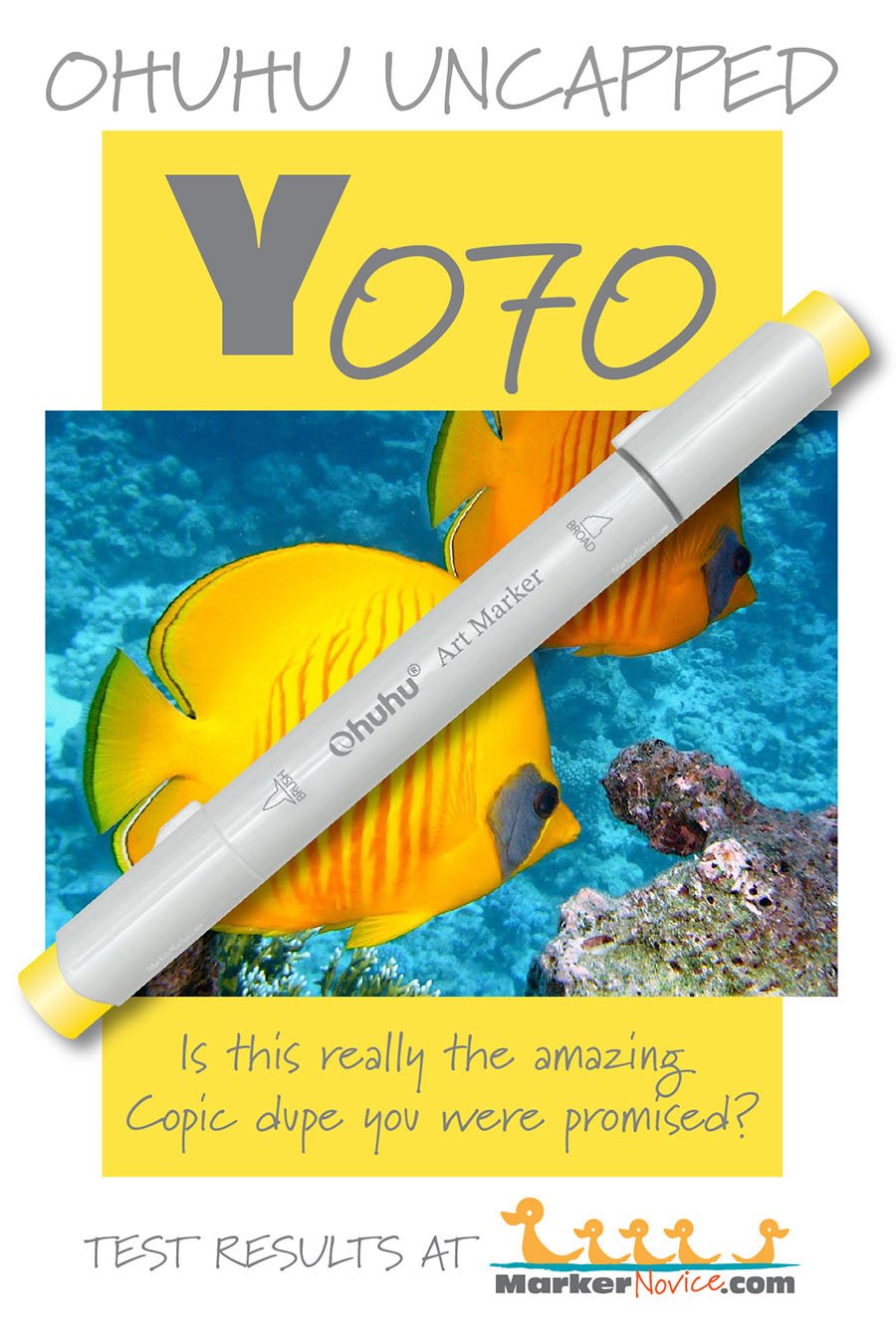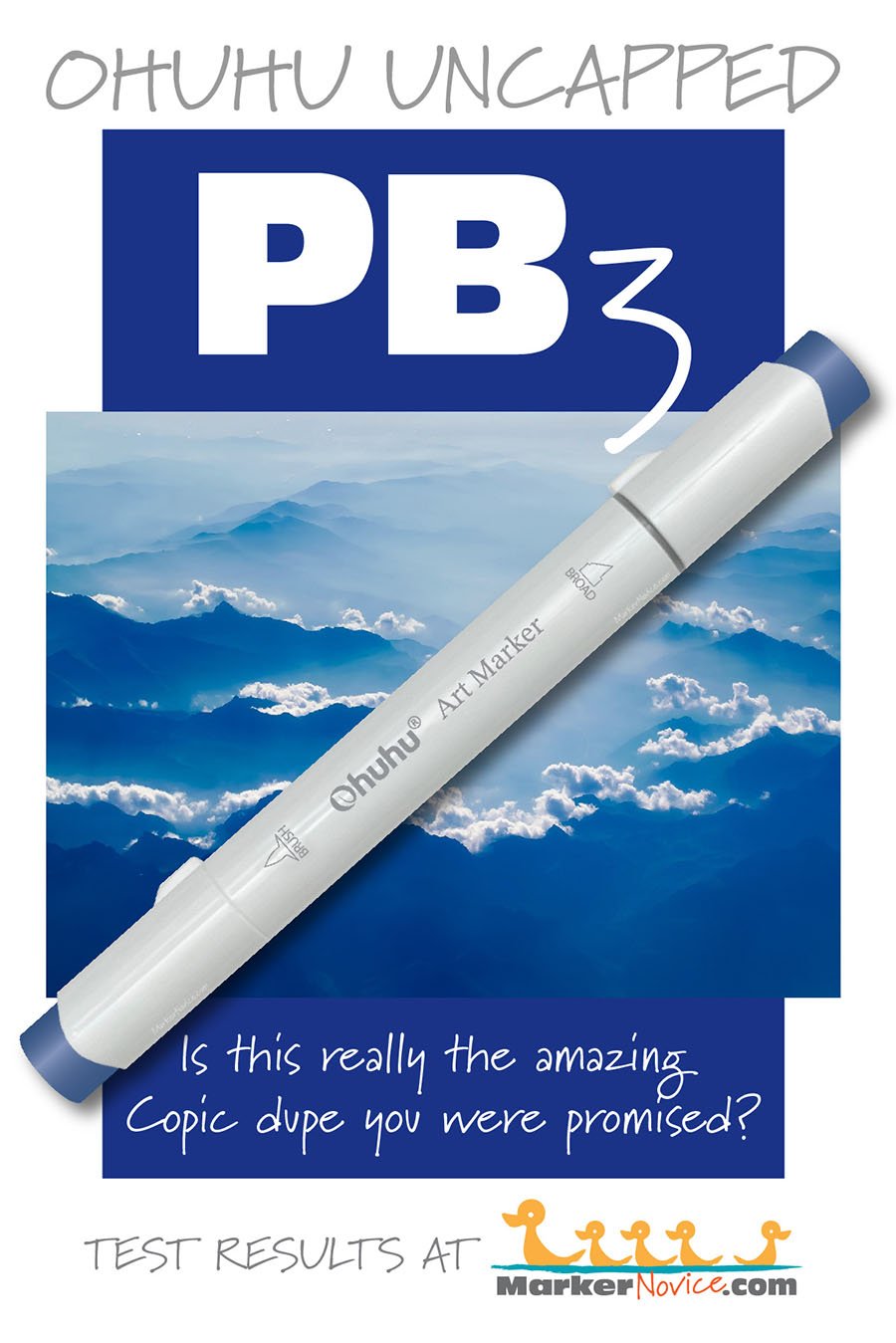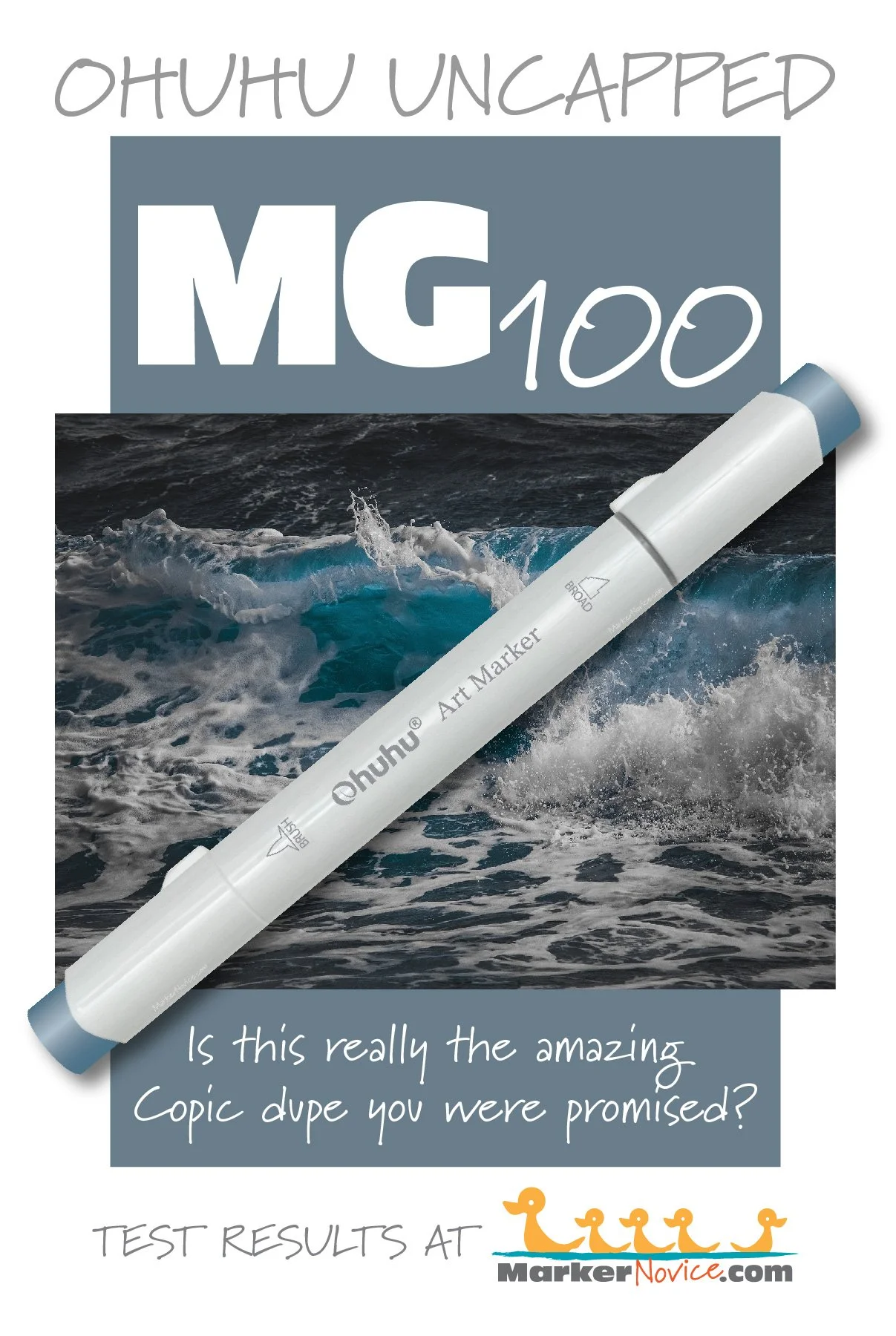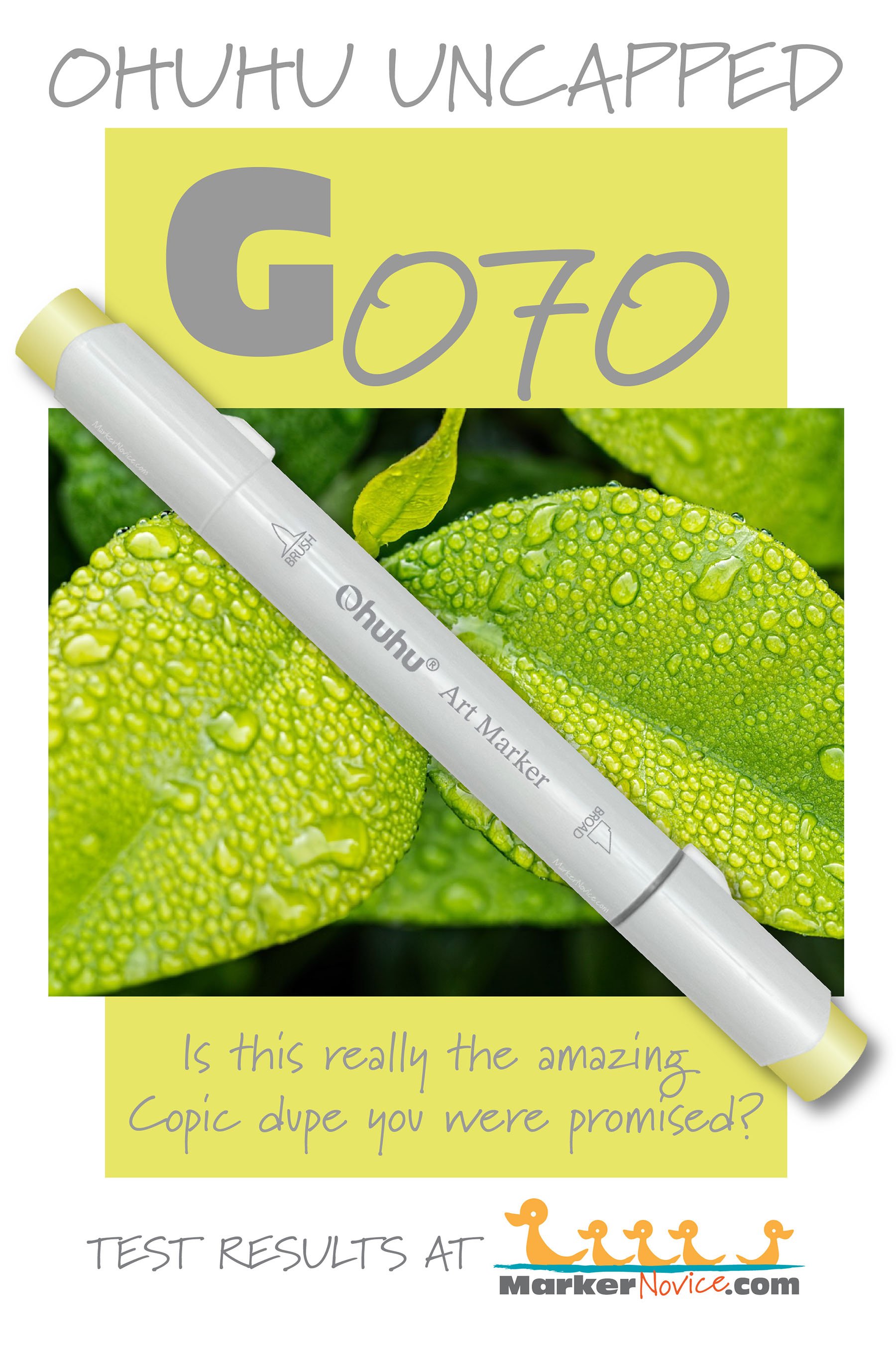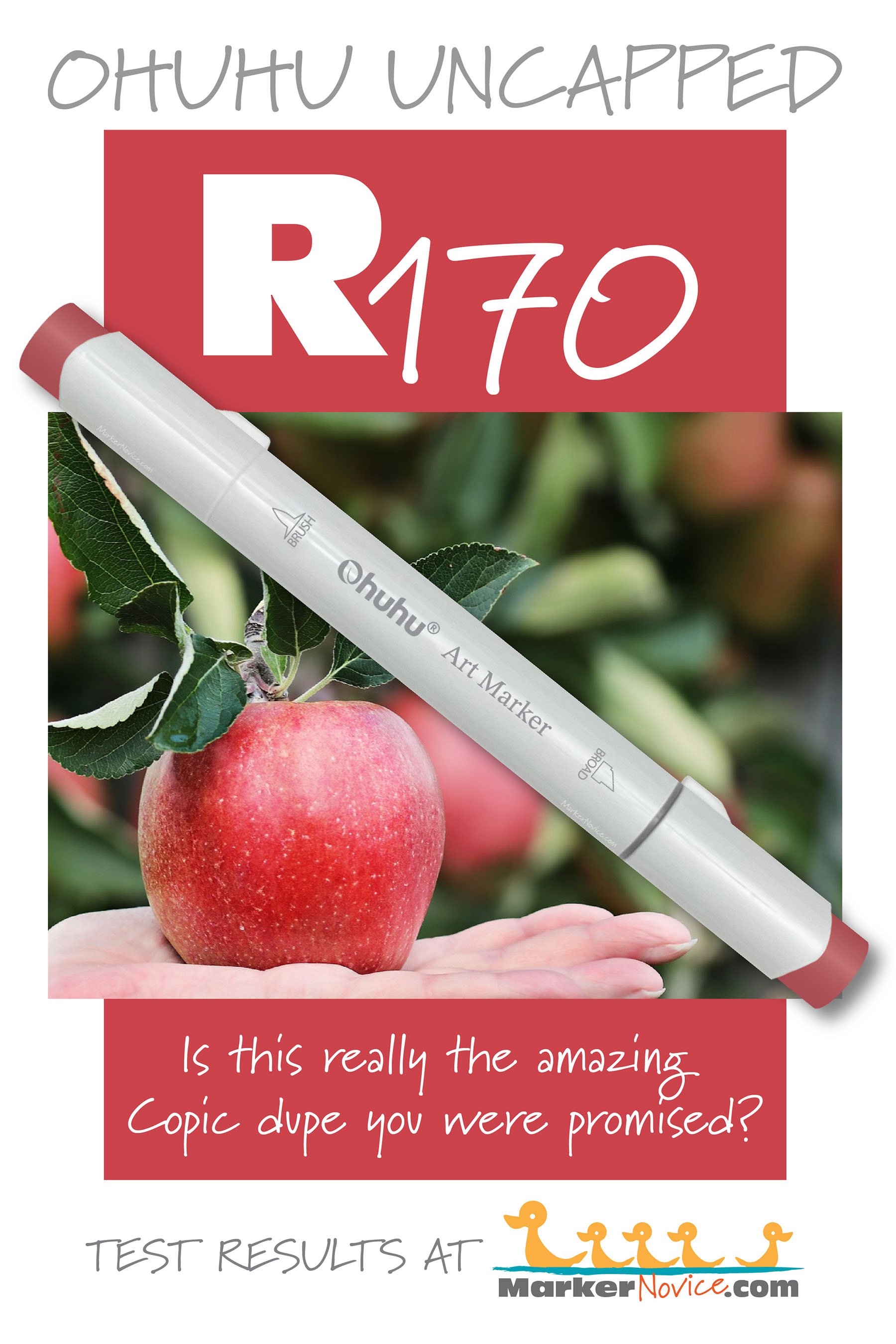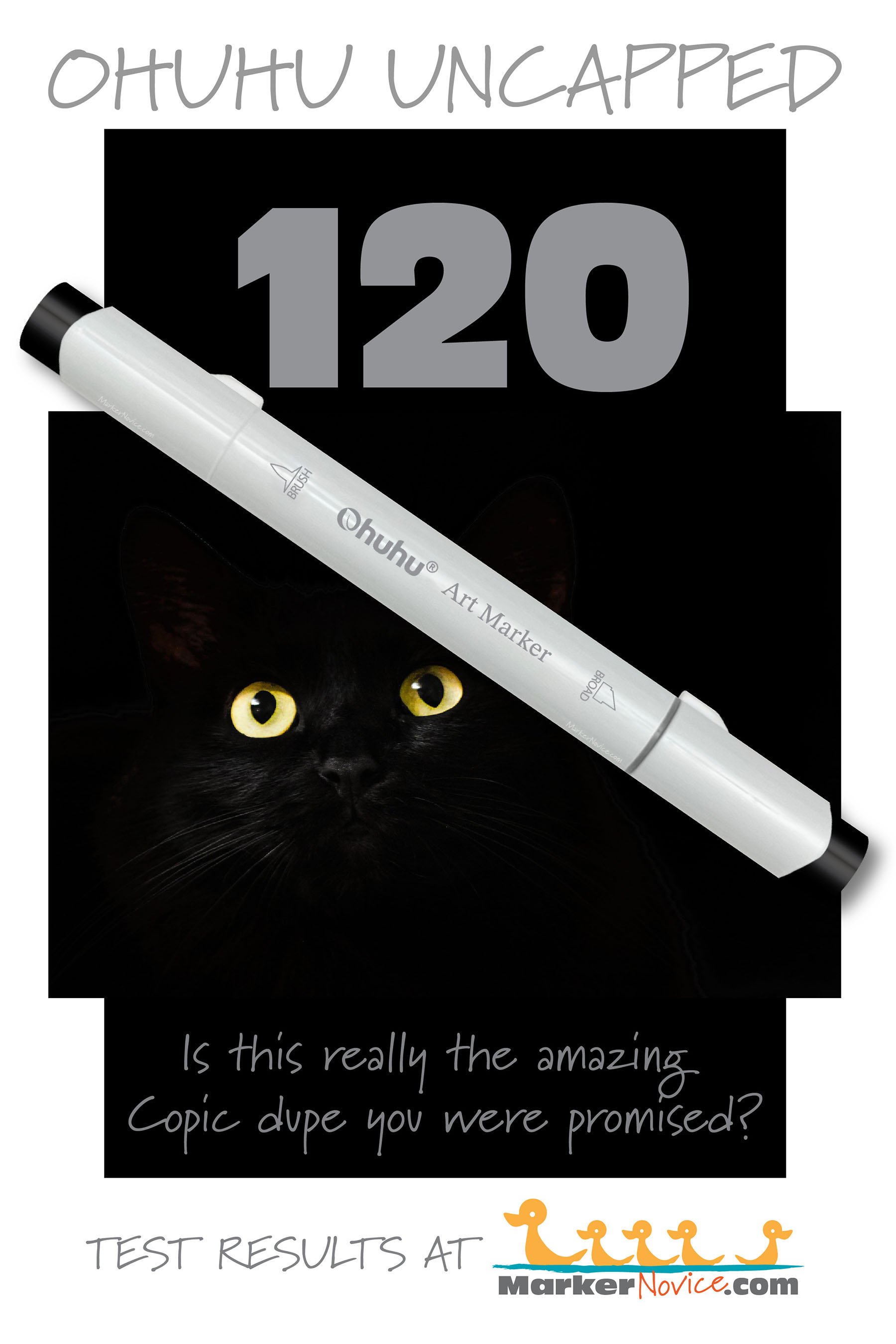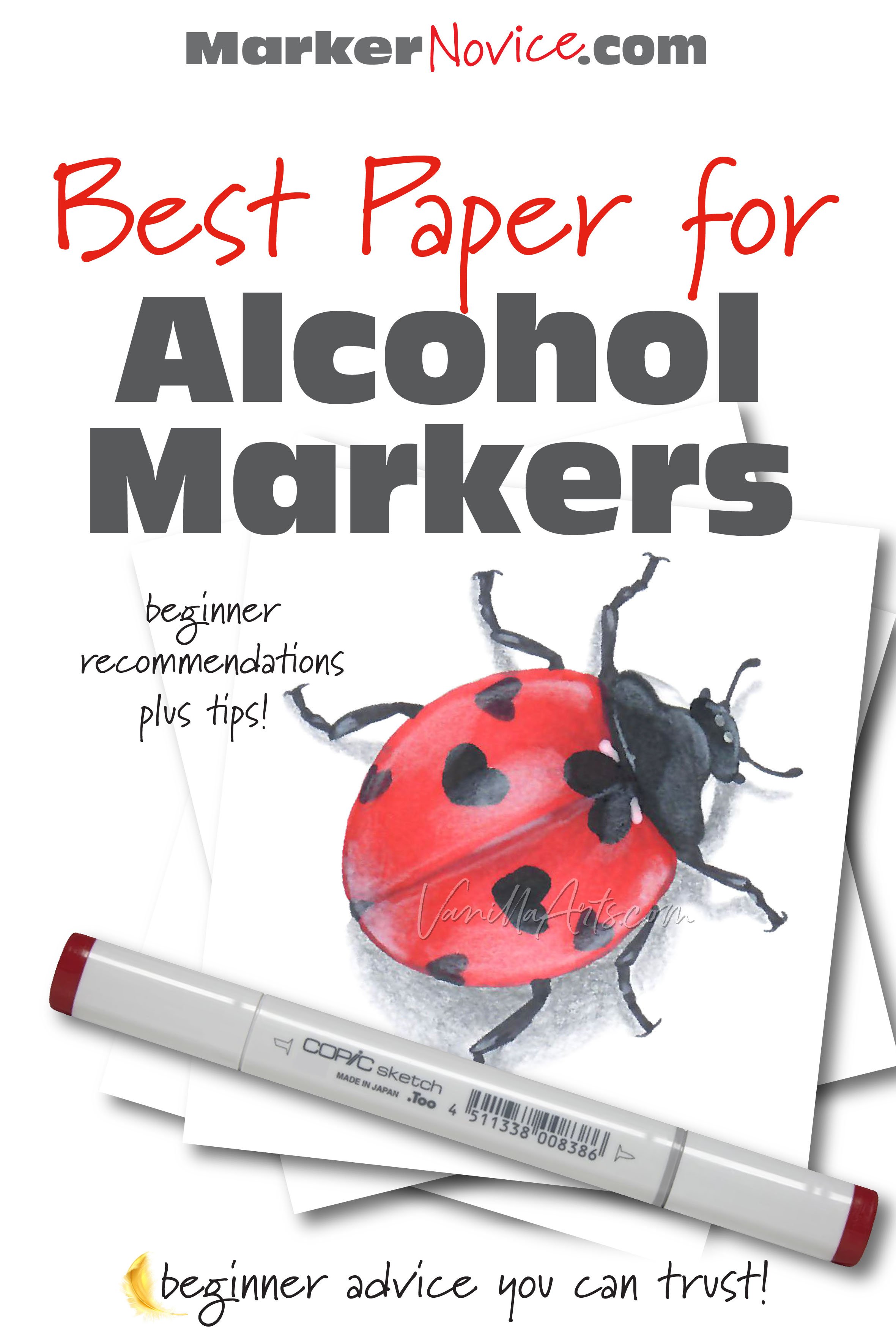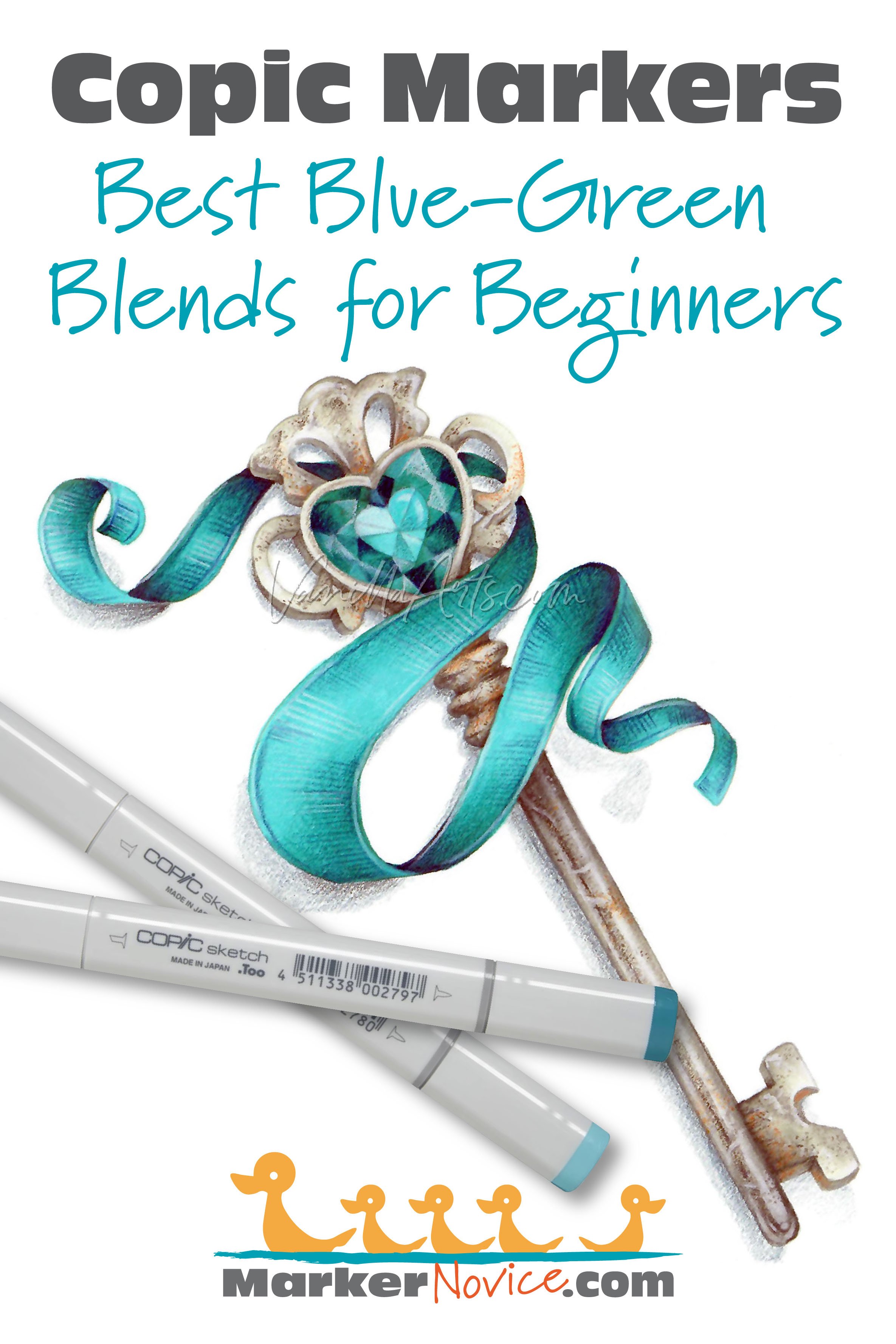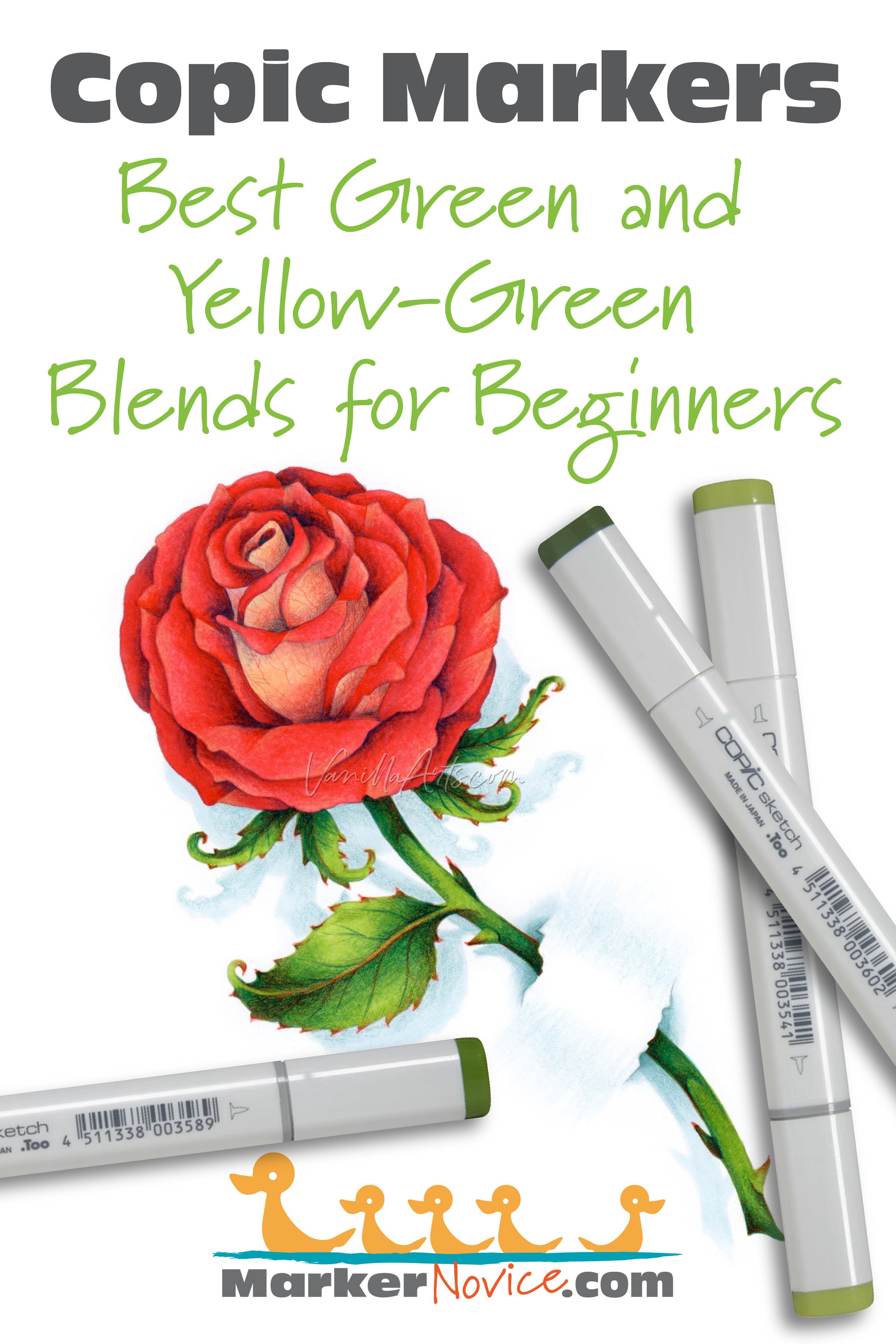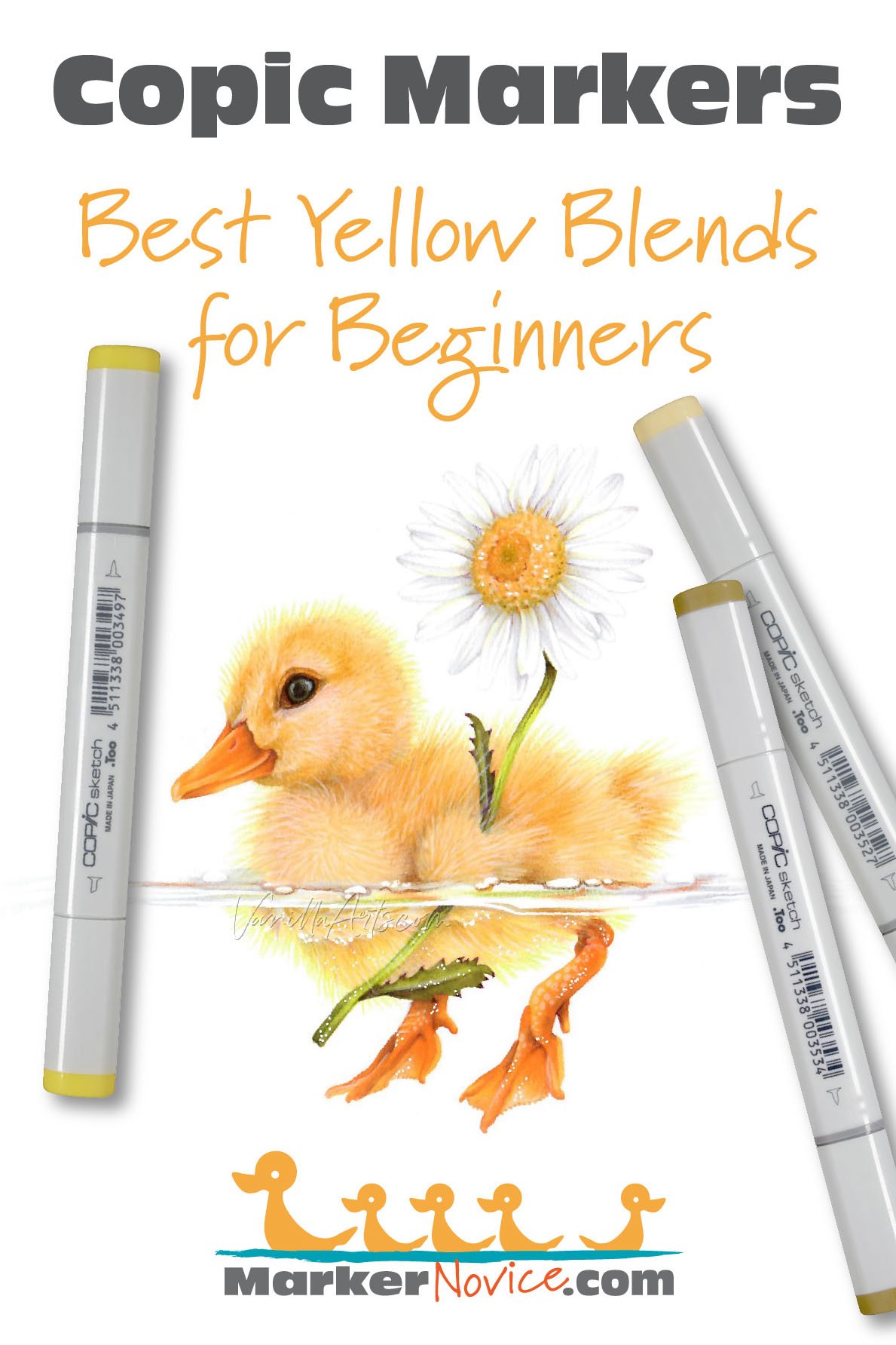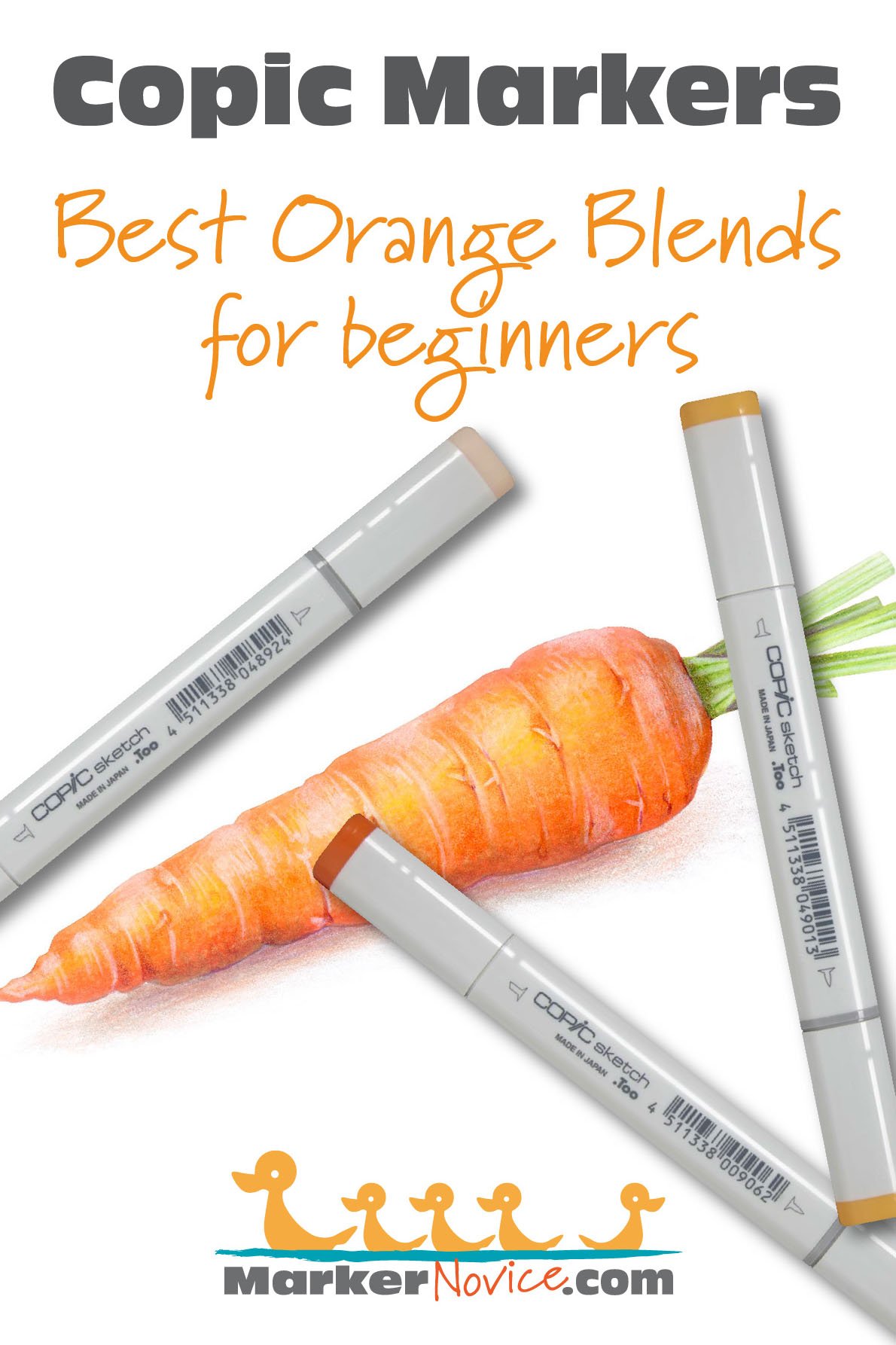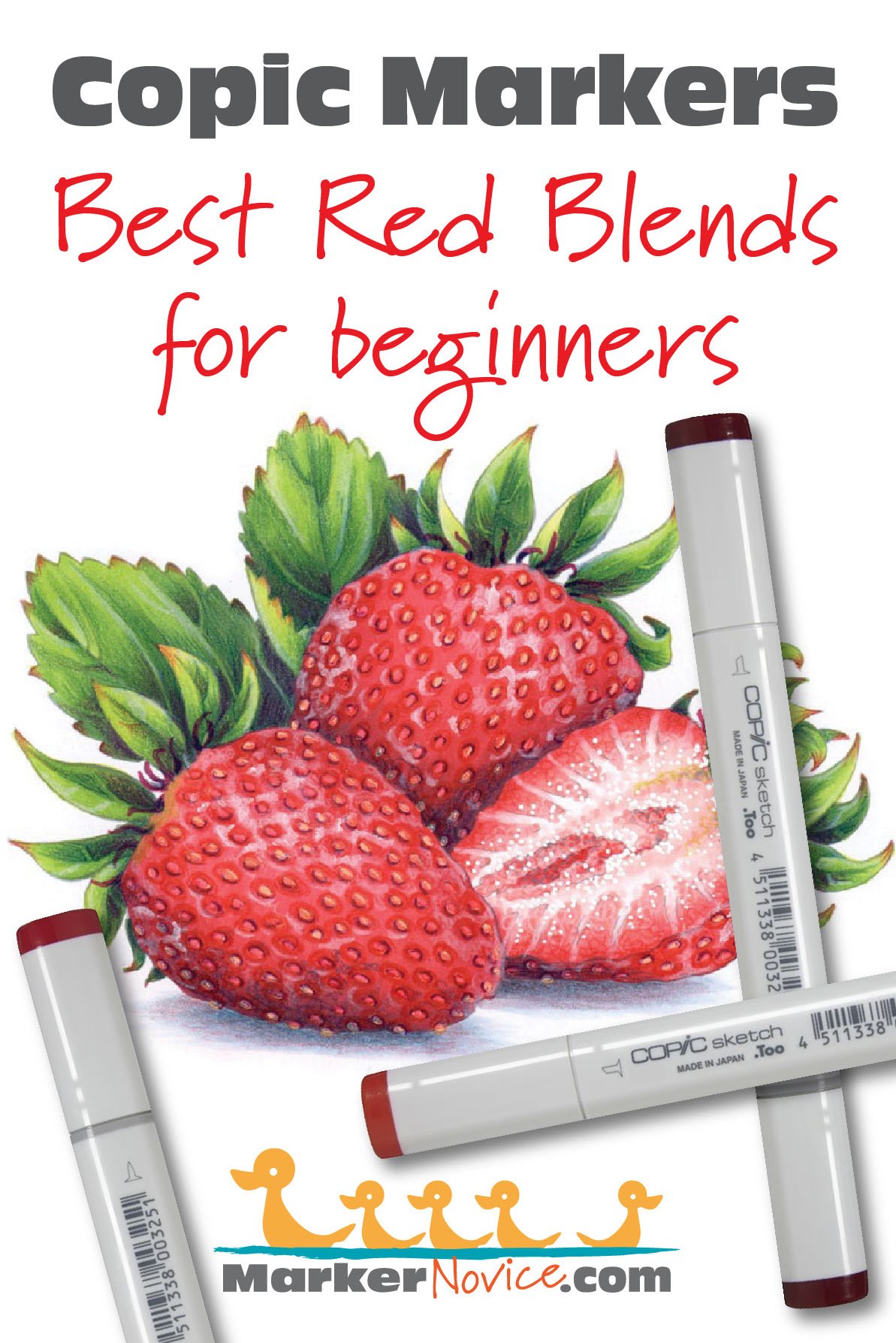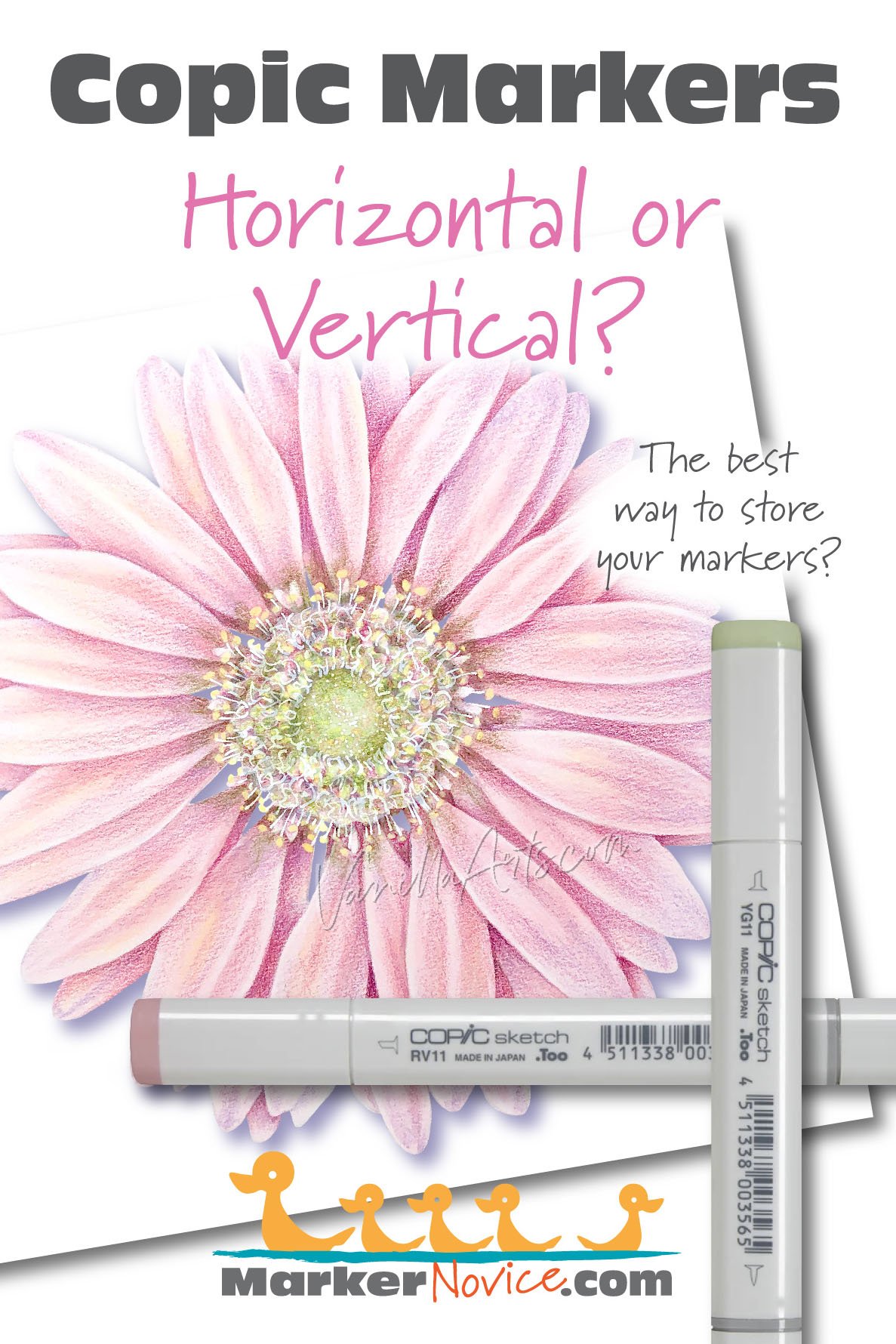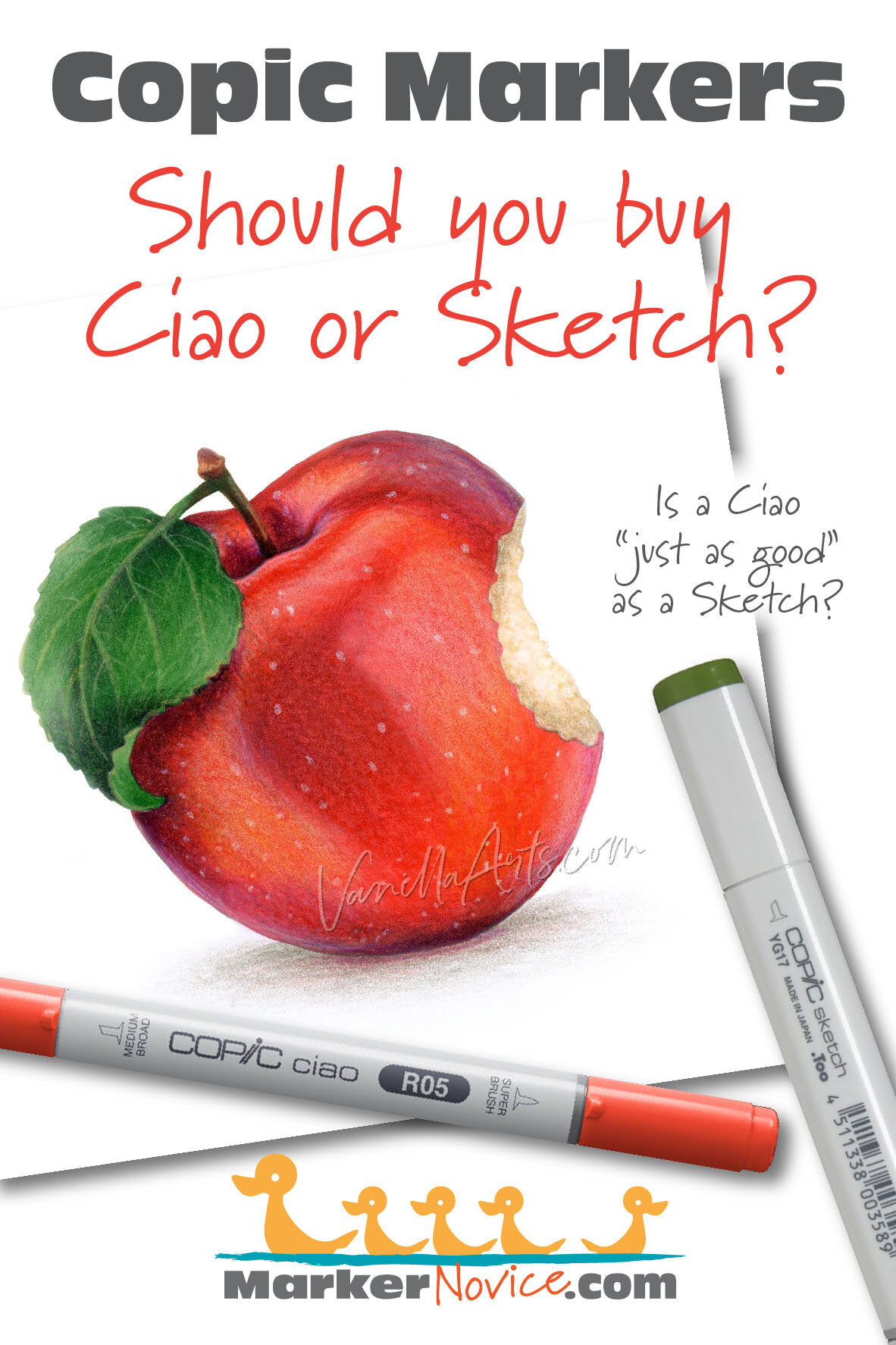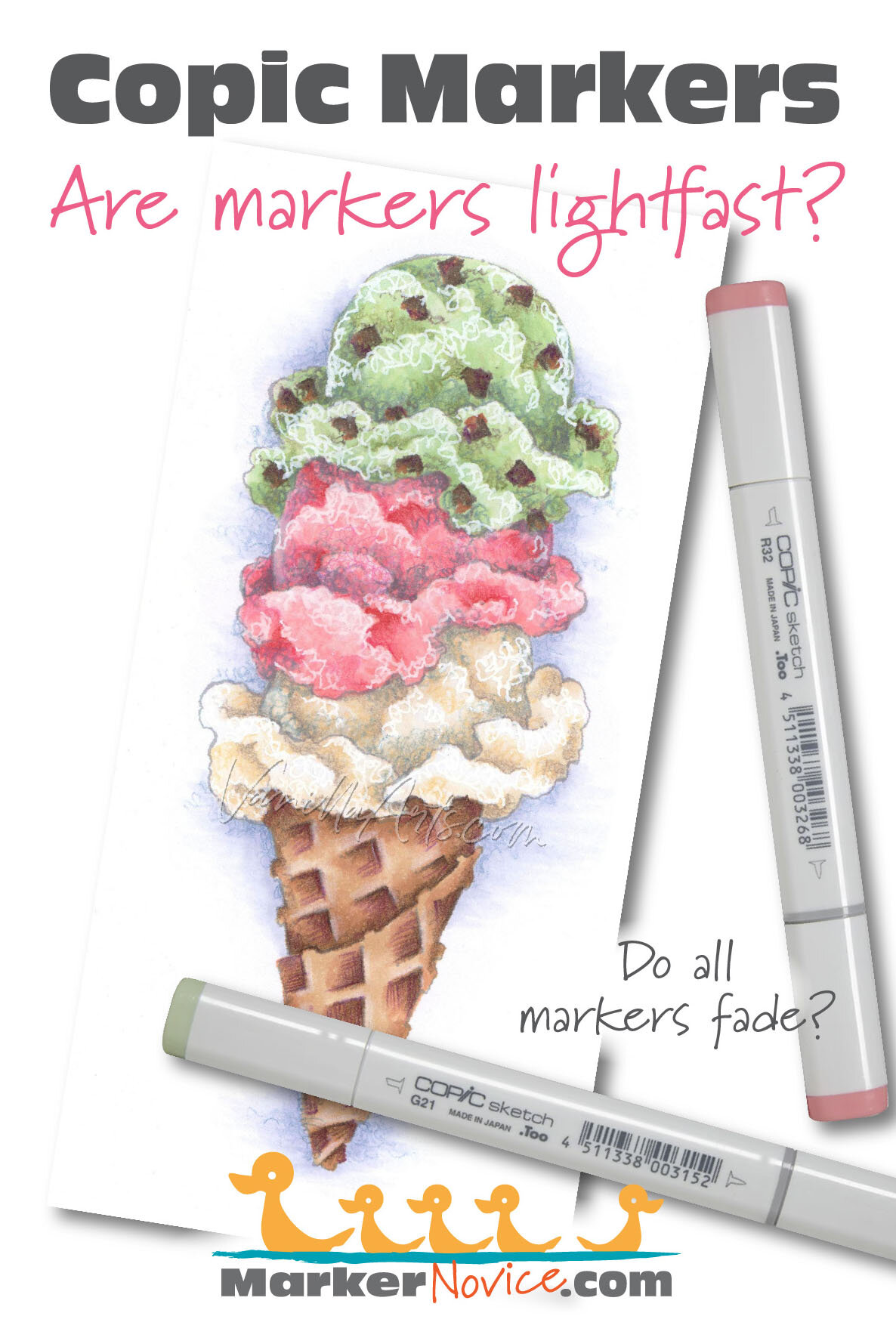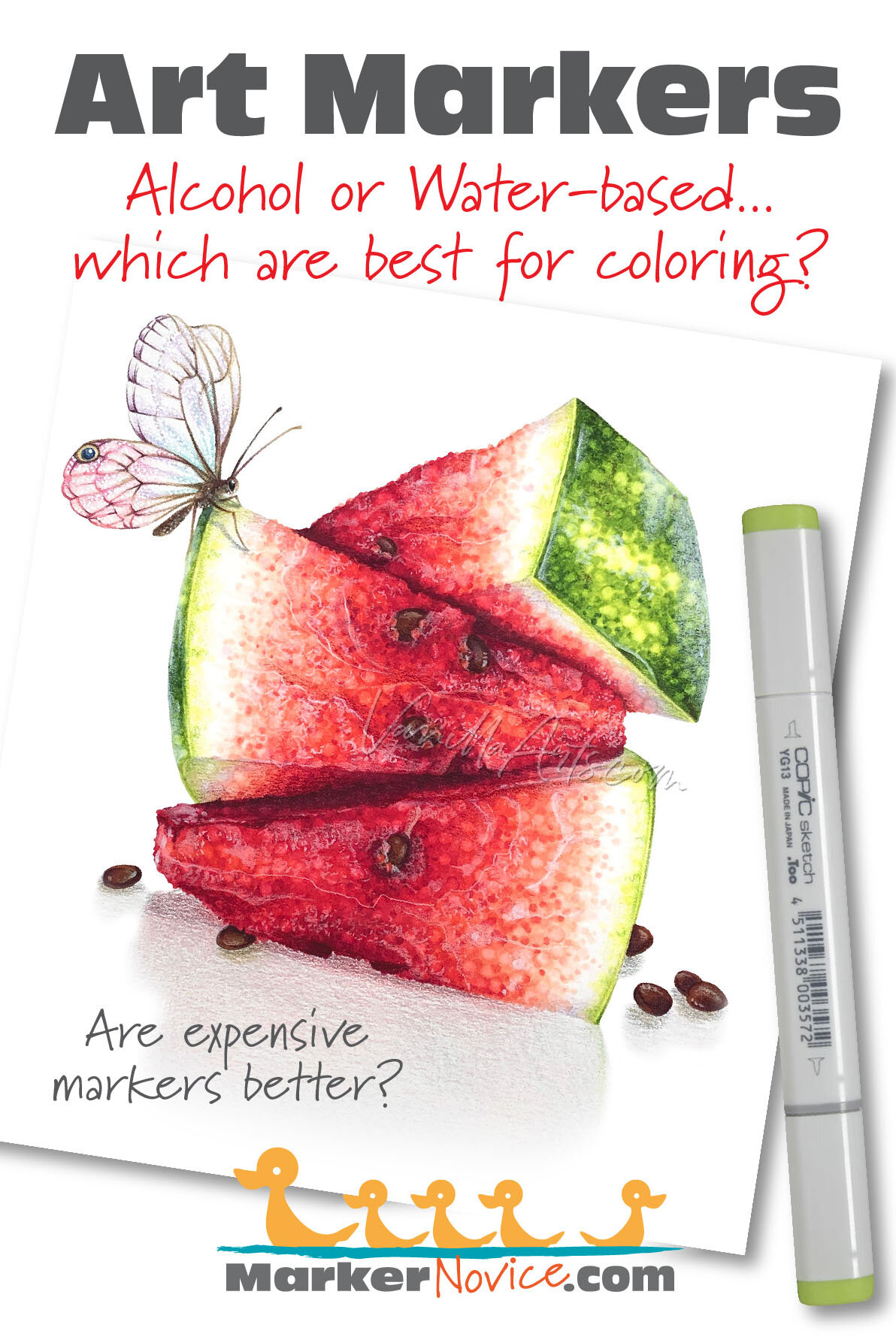You were told “Ohuhu is the Copic slayer! They’re like Copic Markers but better!”
Is it true?
Every Ohuhu Marker has different characteristics based upon its unique ink formula. No matter how great they say the marker is, test results do not lie.
So are Ohuhu markers as great as you’ve heard?
Let’s look at Ohuhu Y030 to find out.
WARNING: Ohuhu markers have numbers on the cap but not on the body of the marker. We do not recommend coloring with both caps off due to the risk of accidentally placing the wrong caps on a marker.
Test results: Ohuhu Y030 Lemon Chiffon
Note: The Y030 marker which arrived in my new 320 set of Honolulu markers was dried-out and dead. I had to purchase a second marker to perform these tests. Read more about the large number of dead, dying, and underweight markers I received in a full set of brand new markers here.
REFILL WARNING! At this time, Ohuhu does not sell refills for Y030. To date, you must purchase a new marker when your current marker runs dry. See Ohuhu’s current list of refills here.
Temperature: A slightly greenish pale yellow
Resemblance: highly diluted Hansa Yellow watercolor
Actual Value: N1.5
Unlike Copic, Ohuhu does not measure value— this is a glaring deficiency which makes finding blending combinations harder than it has to be!
All Copics are measured on a Neutral Gray value scale. The last number on the Copic cap indicates the value. We’re using the Copic scale to measure Ohuhu until Ohuhu releases a reliable value scale.
Cap Accuracy: The plastic on an Ohuhu Honolulu Y030 marker is close to the color of one coat of this ink
Copic Substitution: Ohuhu Y030 is a match to Copic’s Y11. I don’t think they’re the same ink due to the difference in test results but the color appearance is strikingly close.
Note: similar colors rarely behave the same way. From experience I can tell you that Copic Y11 is an easy blending marker. I recommend it for beginners, it’s on my Starter Marker List, and I teach with it frequently— all because it’s a very friendly blender for beginners. Ohuhu Y030 is a staining color which is unusual in markers this light. Keep this in mind for ALL art supplies, it’s not enough to match the color, two similar inks, pencils, or paints can behave radically different in usage. See Copic Y11 test results here.
Buildup: Y030 reaches a maximum value at about 3 coats.
Overinking: I do not recommend using more than 3 coats of Y030. As with most Ohuhu markers, four layers looks exactly like three so why waste the ink.
Shattering: Y030 shatters into two inks… I think. This is such a light color that it’s hard to tell but the center dot in the shattering test looks stained with a more golden color than the pale ink leakage around the outer wet-zone. I didn’t expect this color to shatter at all, so the fact I’m seeing two yellows is interesting.
Chromatography testing shows this ink’s behavior when it comes in contact with #0 Colorless Blender (solvent). High shattering colors may leak unexpected color when you make corrections or attempt to blend with any color that has a high solvent to colorant ratio. Shattering is not bad, it’s just something to be aware of.
Staining: Y030 is a mildly staining color. Not only is this unusual for a pale color, it’s also unusual for yellow. As you can see in the staining test, the center stripe doesn’t return back to white paper and retains blobs of yellow where the solvent was heaviest. It’s a light color but it behaves like something darker.
With alcohol markers, a staining ink is generally a sign of a low quality ink. Staining inks bond to the paper fibers and are reluctant to release. Staining inks make blending harder than it has to be!
Lift: Y030 lifted enough from the paper that I think this ink is correctable when you accidentally color outside the lines. Just take note of the dark stripes of yellow to either side of my staining test. That’s where the colorless blender pushed the ink particles into a pile. You don’t want this to happen when you’re making a correction, so work slowly using light amounts of colorless blender over several passes. You can do it, just be patient.
See staining swatch. Sample was given 6 stripes of #0 Colorless Blender, drying between each stripe. Results indicate how much lifting you can expect.
Lightfast: Y030 faded by about 80% during the test period. This is extreme fading but it’s not unique to Ohuhu. Copic Y11 had a similar fade rate.
Samples were swatched on X-Press It Blending Card. 1 layer of ink was exposed to windowsill sunlight for 21 days. Approximately 10 hours of sun per day based on weather conditions. Note: we do not recommend displaying original marker art under these conditions.
Ink Color Family: Ohuhu has a small but interesting family of yellow markers. They offer more yellows than Copic and more desaturated yellows than Copic. I’m happy to see a marker company give us something more than 10 yellow highlighters.
The Ohuhu numbering system is complete garbage and doesn’t always make sense. While some may quibble with the inclusion of brownish or greenish colors in the Y family, I’m actually okay with it. Most yellow inks are pretty brown or green in their concentrated form. What I can’t excuse is Y5, a scarlet red marker which matches R17 and Y12 which is similar to E27!
Cap Numbering: Y markers are all over the place. Some have 1 or 2 digits (but are not releated at all), some follow the 0X0 pattern, some are 100s and some are 200s. There’s no rhyme or reason to it— I think the system is either complete carelessness or it’s designed to make it difficult to track marker colors.
As stated above, the Ohuhu numbering system makes no sense. The markers are not arranged in chromatic order so you can not trust the numbers to tell you whether this marker is lighter or darker than other Ohuhu markers with similar numbers.
I’m still early in the Ohuhu testing process. I will add more info to this article as I learn more and when I spot behavioral patterns.
From what I’ve learned so far, I will not be working with Ohuhu markers and I will discourage students from using them in my classes. They’re simply not worth the frustration.
Learn about Y030, a pale yellow Ohuhu Marker. We swatch and test Ohuhu colors- layering, staining, lift, value, lightfastness, saturation, and cap accuracy. | MarkerNovice.com | How to color with alcohol markers

